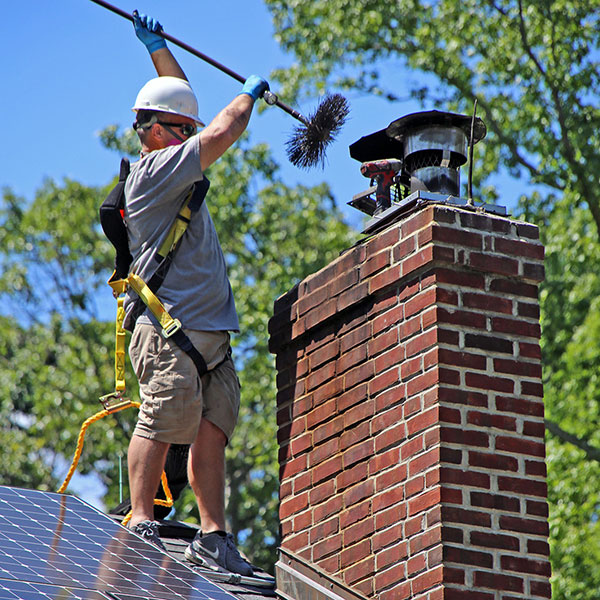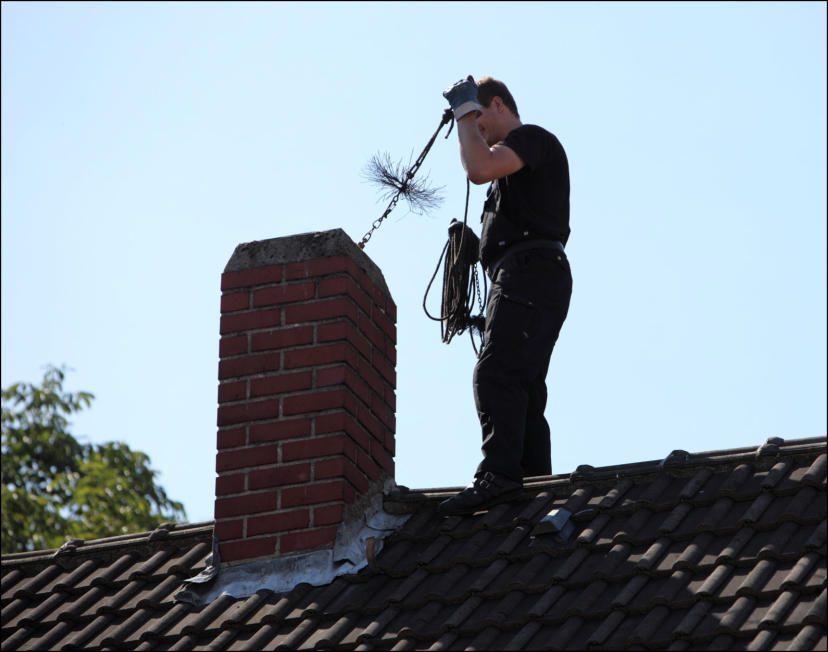Elevate Your Home's Fire Safety with Professional Chimney Sweep San Jose Insights
Elevate Your Home's Fire Safety with Professional Chimney Sweep San Jose Insights
Blog Article
The Ultimate Chimney Cleaning List for Homeowners
Guaranteeing the safety and performance of your chimney is an essential responsibility for home owners who rely on their fireplace or wood cooktop for warmth during the chillier months. A properly maintained smokeshaft not only improves the general functioning of your home heating system however additionally mitigates the risk of potential dangers such as fires and carbon monoxide gas leakages. With a comprehensive list in hand, homeowners can systematically attend to key upkeep jobs that are important for a clean and safe chimney. From checking the chimney structure to removing creosote buildup, each action plays an important function in guarding your home and liked ones.
Smokeshaft Assessment and Assessment
When carrying out a chimney examination and analysis, it is necessary to completely analyze the interior and outside parts for signs of damages or accumulation. The inside of the smokeshaft need to be checked for any obstructions, such as bird nests or excess soot, which can position a fire risk. Checking the flue for creosote build-up is vital as this very combustible substance can ignite and cause a chimney fire. Additionally, assessing the condition of the chimney lining is vital to make sure correct air flow and security.

Exterior Upkeep and Services
Examining the exterior of the smokeshaft for any kind of structural concerns, such as cracks, loosened bricks, or indications of water damages, is important in making certain the overall security and long life of the smokeshaft. With time, exposure to varying climate condition can trigger damage on the smokeshaft's outside, possibly leading to more significant problems if not dealt with quickly. On a regular basis examining for any kind of splits in the mortar or blocks can aid protect against water from permeating in and creating damages to the smokeshaft framework. Loose bricks ought to be repositioned and secured to maintain the integrity of the chimney. In addition, any kind of indicators of water damages, such as discoloration or mold growth, should be investigated and fixed to stop more damage. Resolving these outside upkeep problems in a timely manner can lengthen the life of your smokeshaft and avoid costly repairs down the line. Proactive repairs and normal assessments are essential to maintaining your smokeshaft in ideal condition.
Cleaning the Chimney Flue and Damper
To ensure proper functioning and safety of your chimney, normal cleansing of the smokeshaft flue and damper is essential. Ensure that the damper opens and shuts efficiently, as an effectively operating damper aids control air flow and avoids drafts when the chimney is not in usage. Normal upkeep of the chimney flue and damper not only improves the performance of your smokeshaft however likewise decreases the risk of smokeshaft fires and carbon monoxide build-up in your home.
Eliminating Creosote Buildup Safely
Just how can house owners safely eliminate creosote buildup from their smokeshaft to maintain its ideal performance and security? Creosote, a result of melting timber, can accumulate in chimneys over time, posing a fire danger if not properly handled.
There are numerous approaches to remove creosote, relying on the buildup's intensity. For light creosote build-up, using a smokeshaft brush or a homemade creosote eliminator made of equivalent components water and vinegar can be effective (Chimney Sweep San Jose). For thicker down payments, specialist chimney cleaning solutions might be necessary
It's vital to wear protective equipment such as handwear covers, safety glasses, and a mask when handling creosote to avoid skin irritability or breathing. Additionally, appropriate air flow while cleansing the smokeshaft is important to prevent breathing in dangerous fumes. Normal smokeshaft inspections and cleanings can assist stop creosote build-up, making check this certain the safety and efficiency of your chimney.
Fire Safety Preventative Measures for Smokeshaft Owners
Routine smokeshaft inspections by qualified experts are essential click site to recognize any obstructions, creosote build-up, or structural problems that can position a fire danger. Mounting a chimney cap can avoid particles, pets, and rainwater from going into the smokeshaft and creating clogs or damage. Furthermore, smokeshaft proprietors ought to have a stimulate arrestor or smokeshaft trigger arrester installed to avoid stimulates from running away and possibly firing up neighboring combustibles.

Verdict
By adhering to the utmost chimney cleansing checklist laid out in this post, property owners can inspect, tidy, and repair their smokeshaft successfully. Proper upkeep not only lowers the danger of chimney fires yet likewise lengthens the life expectancy of the chimney system.
Checking the chimney cap and crown for any kind of damage is vital to protect against water from leaking into the smokeshaft and triggering further damage.
Routine upkeep of the chimney flue go to this web-site and damper not only boosts the efficiency of your smokeshaft yet also lowers the risk of chimney fires and carbon monoxide build-up in your home.
Routine smokeshaft inspections and cleansings can help avoid creosote build-up, ensuring the security and performance of your smokeshaft. (Chimney Sweep San Jose)
Installing a chimney cap can stop particles, pets, and rain from getting in the smokeshaft and causing blockages or damage. Proper maintenance not only decreases the danger of smokeshaft fires but also extends the life expectancy of the chimney system.
Report this page